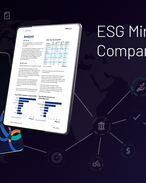Following on the heels of explosives group Dyno Nobel and hire company Emeco's 2006 mining services mega-floats in Australia, US-headquartered Boart Longyear may sit behind only Orica among ASX-listed mining service companies, by market capitalisation. Orica was described recently by investment bank Citigroup as "the world's leading mining services business".
Boart Longyear's non-underwritten share issue at $A1.76-2.10 a share could raise $2.2-2.65 billion and give the company an initial market capitalisation of $2.6-3.12 billion.
About 70% of its projected fiscal 2007 revenue of $US1.46 billion ($A1.88 billion) is classified by the company as minerals industry revenue, though that doesn't include what could be recognised as mining sector business in the coal and oil sands industries.
Orica, worth about $A7.2 billion at current prices, reported sales from its mining services arm of $2.62 billion in the year to September 30, 2006, up 32% on the previous year.
Dyno Nobel, valued around $A2 billion, reported sales of more than $1 billion for 2006.
While the two companies slug it out from their Australian base for market share in the global mine explosives and blast services market, Boart Longyear will emerge as an ASX-listed drilling giant whose two major rivals in the minerals drilling arena are traded on the Toronto and Nasdaq exchanges. They are Major Drilling Group International and Layne Christensen, respectively.
Major Drilling last week reported full-year revenue of $C375.3 million ($A411.4 million) for the 12 months to January 31, 2007, up 24% on its 2006 result, and a $38 million net profit.
Layne Christensen last reported in December. It booked a $US19.6 million net profit on revenue totalling $529.7 million for the nine months to October 31, 2006, up 69% and 67.5%, respectively, on the previous corresponding period in 2005.
Like Boart Longyear, Layne Christensen supplies drilling services to the mineral exploration, energy, and water/wastewater infrastructure markets. But the former expects to derive 50% of projected 2007 minerals drilling services revenue from mine development drilling and a further 25% from production drilling – both less volatile sectors than exploration drilling.
Nevertheless, Boart Longyear is forecasting strong growth in mineral exploration spending over the next two years, including a 20% jump in expenditure to about $US9 billion in 2007. "Management estimates that about 40% of total mining exploration budgets are comprised of spending on drilling services," the company said.
Its key customers include the established majors such as Anglo American, Barrick Gold, BHP Billiton, Phelps Dodge, Rio Tinto, Teck Cominco and Xstrata, and the rising tide of juniors, who raised an estimated $US14.8 billion of equity in 2006.
Boart Longyear estimates it has 17% of the $US2.5 billion global minerals drilling services market, making it the No.1, while it is targeting growth in the much bigger $3.8 billion environmental and infrastructure drilling market and the $2.1 billion (and growing) energy market. The latter includes provision of drilling services to oil sands, oil shale, coal bed methane, geothermal and coal exploration companies.
Boart Longyear says Australia, Canada and the US alone account for about $US1 billion of minerals drilling expenditure. It has been busily acquiring companies in these markets – closing four deals in Australia in the back half of 2006 alone.
Chief executive Paul Brunner says the company has identified "a number of further opportunities globally" and believes it is positioned to be the "leading consolidator of the fragmented drilling services market". Russia, Latin America and Africa are among the "high growth, developing geographies" Boart Longyear is targeting for growth in minerals drilling.
The company expects to add 77 drill rigs to its total fleet in fiscal 2006-07 after adding 79 last year. Its projected fleet of more than 1080 rigs at the end of June will be by far the "industry's largest", with the "aggregate annual revenue uplift from these rigs to be seen in fiscal year 2008".
The rig count was 728 in 2003.
Boart Longyear provides drilling services in 30 countries and the business has about 5400 employees. Management estimates the company enters into about 6500 drilling contracts a year, with no one contract constituting more than 3% of total company revenue.
The company also manufactures and supplies drilling equipment and consumables, which are expected to generate more than $US550 million of revenue this year. Core drilling tools are tipped to account for 42% of that revenue, and capital equipment a further 22%.
Boart Longyear even supplies equipment and consumables to its big minerals drilling service rivals Major Drilling and Layne Christensen.
Oddly, Boart Longyear still makes underground load-haul-dump and utility vehicles, mainly for coal mines, in Australia and South Africa. The $US55 million-a-year business would be attracting some premium-priced interest in the current market and can't be worth hanging on to for Boart Longyear unless it intends to go further down that non-drilling path.
* Richard Roberts is editor of www.highgrade.net

























